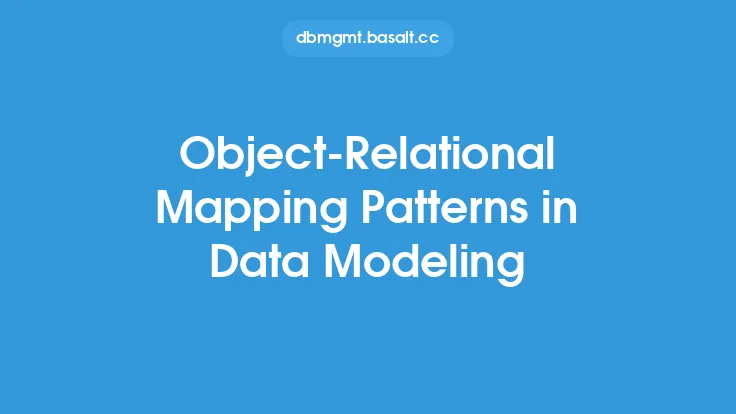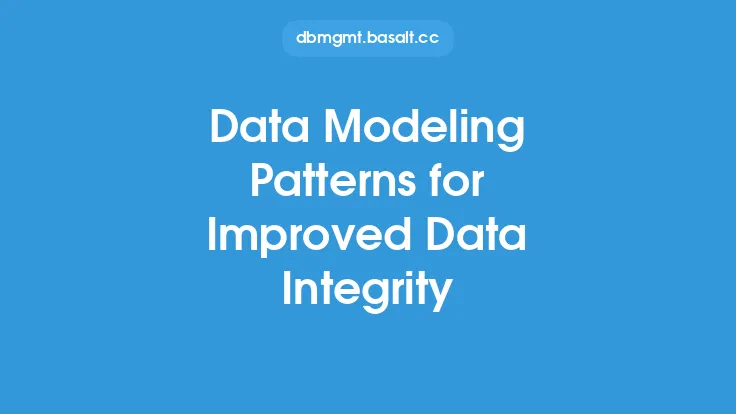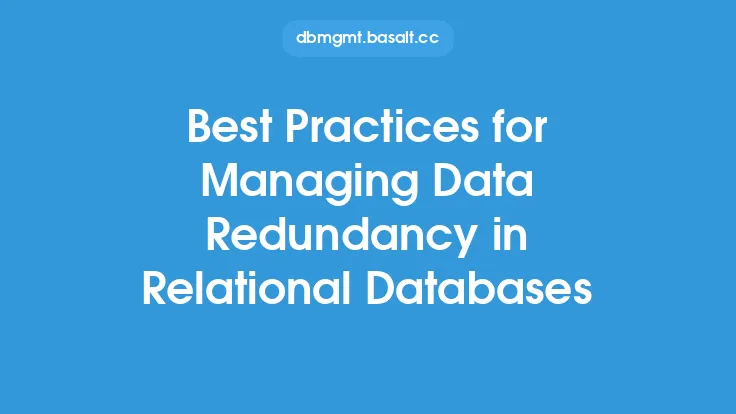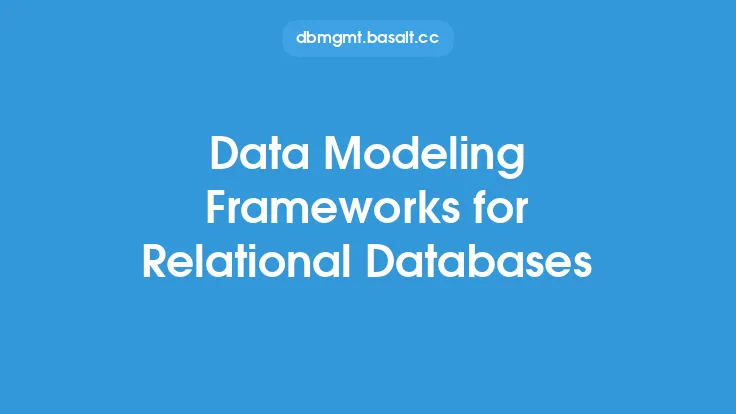When designing a relational database, one of the most critical steps is creating a data model that accurately represents the relationships between different entities and ensures data consistency and scalability. A well-designed data model is essential for supporting business intelligence, data analytics, and other data-driven applications. In this article, we will explore common data modeling patterns in relational databases, which are fundamental to creating a robust and maintainable database design.
Introduction to Data Modeling Patterns
Data modeling patterns are reusable solutions to common data modeling problems. They provide a standardized approach to designing databases, making it easier to communicate with stakeholders, ensure data consistency, and reduce errors. Data modeling patterns can be applied to various domains, including e-commerce, finance, healthcare, and more. By using established patterns, data modelers can create databases that are more efficient, scalable, and adaptable to changing business requirements.
Entity-Relationship Modeling
Entity-Relationship (ER) modeling is a fundamental concept in data modeling that represents the relationships between entities, attributes, and relationships. In ER modeling, entities are objects or concepts that have independent existence, such as customers, orders, or products. Attributes are characteristics of entities, like customer name or order date. Relationships connect entities, defining how they interact with each other. ER modeling involves identifying entities, attributes, and relationships, and then representing them using a diagrammatic notation, such as Chen's notation or the Crow's Foot notation.
Normalization Patterns
Normalization is the process of organizing data in a database to minimize data redundancy and dependency. Normalization patterns help ensure that each piece of data is stored in one place and one place only, reducing data inconsistencies and improving data integrity. There are several normalization patterns, including First Normal Form (1NF), Second Normal Form (2NF), and Third Normal Form (3NF). Each normalization pattern builds upon the previous one, providing a more robust and scalable database design. For example, 1NF eliminates repeating groups, while 2NF eliminates partial dependencies, and 3NF eliminates transitive dependencies.
Denormalization Patterns
Denormalization is the process of intentionally violating normalization rules to improve database performance. Denormalization patterns are used to reduce the number of joins required to retrieve data, improving query performance and reducing the load on the database. Common denormalization patterns include storing redundant data, using summary tables, and pre-aggregating data. However, denormalization should be used judiciously, as it can lead to data inconsistencies and make database maintenance more challenging.
Data Warehouse Modeling Patterns
Data warehouse modeling patterns are designed to support business intelligence and data analytics applications. These patterns involve creating a centralized repository of data that is optimized for querying and analysis. Common data warehouse modeling patterns include the Star Schema and the Fact-Constellation Schema. The Star Schema consists of a fact table surrounded by dimension tables, while the Fact-Constellation Schema consists of multiple fact tables connected to a central fact table. Data warehouse modeling patterns help improve query performance, reduce data redundancy, and provide a scalable architecture for data analytics.
Recursive Relationship Patterns
Recursive relationships occur when an entity has a relationship with itself, such as an employee managing other employees. Recursive relationship patterns are used to model these relationships, ensuring that the database can store and query hierarchical data efficiently. Common recursive relationship patterns include the Adjacency List model, the Nested Set model, and the Path Enumeration model. Each pattern has its strengths and weaknesses, and the choice of pattern depends on the specific use case and database requirements.
Many-to-Many Relationship Patterns
Many-to-many relationships occur when an entity has multiple relationships with another entity, such as a customer having multiple orders and an order being associated with multiple customers. Many-to-many relationship patterns are used to model these relationships, ensuring that the database can store and query complex relationships efficiently. Common many-to-many relationship patterns include the Bridge Table model and the Association Table model. These patterns help reduce data redundancy, improve data integrity, and provide a scalable architecture for complex relationships.
Data Modeling Best Practices
Data modeling best practices are guidelines that help ensure a robust, maintainable, and scalable database design. These best practices include using meaningful table and column names, avoiding unnecessary complexity, and documenting the data model. Additionally, data modelers should consider data security, data privacy, and data governance when designing a database. By following established best practices, data modelers can create databases that are more efficient, adaptable, and aligned with business requirements.
Conclusion
Common data modeling patterns in relational databases provide a foundation for creating robust, maintainable, and scalable database designs. By understanding entity-relationship modeling, normalization patterns, denormalization patterns, data warehouse modeling patterns, recursive relationship patterns, and many-to-many relationship patterns, data modelers can create databases that support business intelligence, data analytics, and other data-driven applications. Additionally, following data modeling best practices ensures that the database is aligned with business requirements, secure, and adaptable to changing needs. By applying these patterns and best practices, organizations can unlock the full potential of their data and make informed decisions to drive business success.





